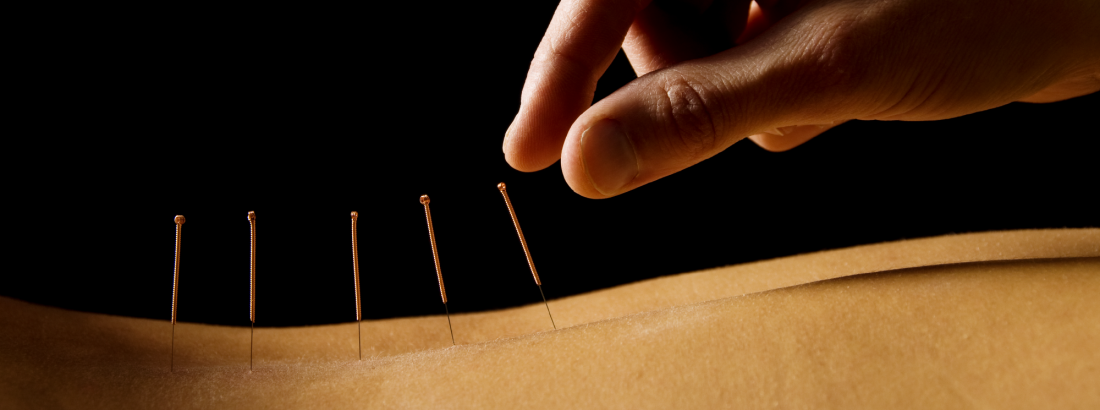
Acupuncture for chronic pain
Does your back hurt? Or maybe it’s your knees and joints that need attention? Before taking pills, consider an alternative treatment like acupuncture. Thousands of studies confirm its efficiency against pain. In 1996, this procedure has been approved by the FDA. Today, it’s widely available in hospitals, rehab centers, and private clinics worldwide. Acupuncture not only relieves pain, but also helps with emotional disorders, injuries, and stress-related conditions.
How Does Acupuncture Work?
This healing practice has been around for over 2,500 years. It is widely used in traditional Chinese medicine, offering mental, physical, and emotional benefits. During a typical session, the therapist inserts thin needs in specific points on the body. Each point is associated with a vital organ. Its advocates claim that acupuncture works by balancing the flow of energy. Scientists, on the other hand, suggest that inserting acupuncture needles in the skin stimulates the production of adenosine, an amino acid that speeds up healing and eases pain.
Acupuncture has become popular in Australia. Nowadays, it’s used as a natural treatment for pain, osteoarthritis, depression, anxiety, digestive disorders, migraines, and chronic stress. It has been also shown beneficial for weight loss and metabolic disorders. Some people use it for treating injuries and neurological diseases.
Despite involving needles, acupuncture is pain-free. It actually relieves pain and has none of the side effects associated with most drugs. This therapy is commonly prescribed for muscle aches, neck pain, knee pain, arthritis pain, headaches, and back problems. It is also used as an adjunct treatment for sports injuries, carpal tunnel syndrome, chemotherapy, and stroke rehab. Many people turn to acupuncture to improve their health and overall well-being.
Even though it’s not fully understood how acupuncture works, its benefits are backed up by research. According to therapists, this practice helps balance energy flow through the body. The needles used in acupuncture can be manipulated manually or by electrical stimulation. This helps activate the body’s meridian points and ease the pain in those areas.
How Effective Is Acupuncture for Pain Relief?
A growing body of research confirms that acupuncture can successfully treat pain. In the long run, it may reduce the need for medications and restore your range of motion. Millions of people experienced relief from neck, low back, and knee pain after just a few sessions. Experts have analyzed 29 studies conducted on 18,000 subjects. Pain decreased by as much as 50 percent in those who had acupuncture.
According to a 2012 study, this therapy appears to work for shoulder pain, chronic headaches, osteoarthritis, and other painful conditions. Health experts see it as a drug-free approach to conventional pain treatment. Currently, nearly 30 percent of Australians are struggling with chronic pain. Many of them use opioids and anti-inflammatory drugs, which carry potential side effects. Nausea, vomiting, fluid retention, stomach ulcers, drowsiness, and swelling of hands and feet are among the most common complaints.
Acupuncture has none of these drawbacks. Its beneficial effects are statistically different than those of placebo treatments. It can be used for treating most types of pain, such as:
-
Fibromyalgia
-
Gout
-
Sciatica
-
PMS
-
Migraines and headaches
-
Tennis elbow
-
Myofascial pain
-
Rheumatoid arthritis
-
Joint pain
-
Pelvic girdle (pregnancy pain)
-
Disc pain
This ancient treatment stimulates the release of peptides and endogenous opioids in the central nervous system, which helps reduce pain. At the same time, it increases pain threshold. Researchers believe that it also triggers multiple biological responses that decrease the perception of pain and accelerate healing. By inserting needles into specific areas, the acupuncturist may activate the pituitary gland and hypothalamus. This causes changes in the secretion of neurohormones and blood flow, improves immune function, and relieves stress. The physiologic effects of acupuncture are similar to those of analgesia.
Acupuncture needles are classified as medical devices by the TGA. This means they must meet strict quality standards. Performing this procedure with contaminated needles may cause infections. During your first visit to an acupuncturist, you’ll be required to fill out a brief questionnaire. The therapist will assess your overall health and ask about your condition. It’s important to understand that acupuncture uses a holistic approach to healing. Unlike conventional medicine, it focuses on the body as a whole and treats the root cause of your problem. Chinese medicine practitioners believe that pain is caused by a disruption in the energy flow.
After an initial assessment, the therapist will insert needles into specific points associated with the body’s meridians. Most patients feel no pain. The needles are left in place for five minutes to one hour. Before leaving the clinic, you will receive advice on what to eat, what herbs to use, and how to manage pain at home. The number of sessions required for pain relief depends on your symptoms.
Choose a qualified practitioner who has experience in treating chronic pain. For optimal results, use acupuncture in conjunction with an anti-inflammatory diet, cupping, massage, tai chi, and other alternative therapies.
